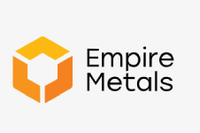Opportunities and Challenges for "Green Copper" Mining
What is green copper and what opportunities and challenges does it present for miners? Find out here.

As the electrification of the world continues to gather pace, copper supply is under the spotlight, with many analysts warning about the need for more production of the base metal.
Copper, which is currently primarily used in construction, is a key metal for the energy transition as it is also used in energy storage applications, as well as in the production of electric vehicles and charging stations.
Stepping up copper supply comes with both challenges and opportunities — while the future looks bright for companies that can feed demand, they will have to address investor interest in meeting ESG standards.
What is “green copper"?
The world is undergoing an energy transition that will require mining, but not at any cost. Sustainability has become a core discussion for the copper industry, with the difficult-to-define concept of “green copper” being used more and more often.
“I don't think there is a clear definition; I think there are as many definitions as you have companies and organizations,” Michael Hellemann Soerensen of Aurubis said during a panel at this year’s Fastmarkets copper conference.
“For us at Aurubis, that contains four different elements: carbon, environmental impact (and) recycling part of the products we make; and then there's social responsibility, including business partner screening, human rights, etc.”
Aurubis is Europe's biggest copper smelter. The company recently started a series of tests using ammonia to reduce carbon emissions in copper rod production. Its goal is for its production to become climate-neutral production well before 2050.
Also speaking at the panel, Uwe Schmidt of Montanwerke Brixlegg agreed that there are many definitions of “green copper.”
“I think that ultimately, if you talk about green copper as a producer, it's just important to be transparent with what you mean,” he said. “Like in many other industries, we are doing this in reverse, but it's sometimes very difficult to grasp. So it often becomes too broad as well, too many components.”
Aside from transparency, companies claiming to produce green copper will need to share their metrics for measuring progress.
“I think it's worth noting how far we've come,” said Georgina Hallett, chief sustainability officer at the London Metal Exchange. “I think now we are committed to understand that even if it's environmentally friendly at the cost of other ESG metrics, that's not okay either. So it's got to be a balance while not getting too broad.”
Challenges ahead for copper juniors and miners
Just a few years ago, cutting emissions was often perceived to be a cost without a benefit, pointed out Johan Anderson of Sweden’s Boliden (STO:BOL) during the discussion. Boliden produces around 350,000 metric tons (MT) of copper cathode annually at its smelters, which makes the company Europe's third largest producer.
“Fast forward a couple of years to where we are today, I don't hear the same comments," he said. "Now we all see that there's a clear benefit in cutting emissions. But of course, it's trying to find solutions to something that we have been doing in the same way for a very long time … I think we have to be ready to pay an extra cost for it in the beginning.”
Despite moves to bring issues like ESG and sustainability to the center of copper conversations, there’s still a long way to go for the industry. “I would like to get to the point where (sustainability) is much more embedded in day-to-day practise, where it's much less than a topic of conversation, because we're just doing it as a matter of course, like we do risk management, like we do credit checks and so on,” Hallet said at the Fastmarkets event.
But looking at the overall picture of where the world is going, mining will be required if the green energy transition, which is being described as one of the most significant economic transitions since the Industrial Revolution, is ever to materialize.
“It's about doing it as responsibly as possible, with as much respect for the area and the people and the biodiversity as possible, but not ‘not at all,’ because you have to have metals for a stable future," she said. "All the things we want to do require metals.”
In fact, under its 1.5 degree Celsius accelerated energy transition scenario, analysis from Wood Mackenzie shows that 9.7 million MT of new copper supply is needed over 10 years from projects yet to be sanctioned. That’s equivalent to nearly a third of current refined consumption, if the industry is to meet Paris Climate Agreement targets.
“We need the miners to speed up investments,” Soerensen said. “We see some reluctance again now, with the drop in copper prices, and we see some concerns with the potential recession ahead of us. But it would be a big mistake to put anything on hold.”
Will customers pay a premium for green copper?
As the push for more environmentally friendly copper production heats up, the discussion around whether customers should be paying a premium for greener products is also gathering momentum.
Earlier this year, Austria’s privately held Montanwerke Brixlegg launched its low-carbon copper, which is made using recycled metal and with hydropower for energy. In September, the company said that it would be offering copper with a 295 euro per MT premium for its low-carbon footprint starting next year. That’s in addition to a floating surcharge for high energy costs.
"If the market offers low-carbon copper, it must have a higher value," Schmidt said.
Last year, Sweden’s Boliden launched two green copper products, one sourced from recycled electronic scrap, and the other from reduced-emissions mining. At the time, the company said it was only getting a small premium for these products.
Speculating on what could happen in the future, Andersson said that perhaps “if low-carbon metals become the industry norm, penalties could be imposed for companies who fail to meet similar green standards.”
Don’t forget to follow us @INN_Resource for real-time news updates!
Securities Disclosure: I, Priscila Barrera, hold no direct investment interest in any company mentioned in this article.





